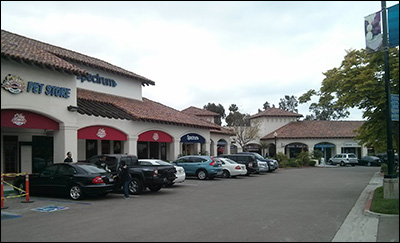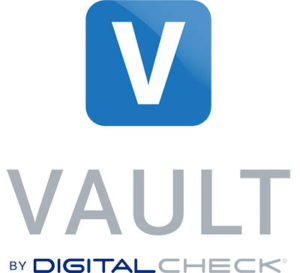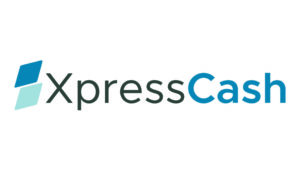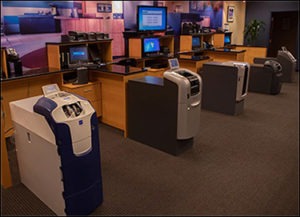About three years removed from the last time it made headlines, postal banking reprised its role in the spotlight last month thanks to a new Senate proposal that would have the U.S. Post Office offer financial services. It’s the first significant action on the matter since the Office of the Inspector General first raised the idea in a series of exploratory papers back in 2014 and 2015.
We’ll be perfectly clear: We want no part of the (potentially ugly) political argument that’s shaping up over whether there “should” be a postal bank or who ought to pay for it. In Digital Check’s own research on the subject, we found numerous examples of postal banks operating elsewhere in the world, but also several reasons – both political and practical – why starting one in the United States presents a daunting task that is unlikely to happen in the near future, if ever.

While the politicians argue over that, let’s instead talk about the goal of postal banks and how the vast majority of them accomplish it. In the simplest terms, postal banks are essentially just a way to operate branches cheaply by sharing space in a building that already exists. Instead of a full-service branch – which can cost millions to open and $500,000 a year to operate – why not run a mini-branch with a tiny fraction of the overhead?
Lower overhead means a location can be profitable with fewer customers or thinner margins. This, in turn, makes it possible to operate branches in places that are currently “banking deserts” – typically rural areas or low-income neighborhoods. Not coincidentally, this also happens to be the main reason why the political proposals say we “should” have a postal bank.
The question no one asks, though, is: If the main advantage is simply that sharing a building is cheaper, then why does the Post Office need to be involved at all? After all, grocery store branches have been around for decades.
To be fair, the post office in any country is usually a convenient target for this sort of arrangement, if only because it tends to have many locations spread across the entire map . Indeed, the USPS boasts nearly 31,000 brick-and-mortar offices – far more than the number of domestic branches for the top five U.S. banks combined (also notable: The top bank on the list, Wells Fargo, operates fewer than 6,000 locations).
The Post Office is far from the only chain with that kind of market penetration, though. In the United States, there exist a multitude of other establishments with similar reaches:
- 30,825 Post Offices
- 121,446 gas stations
- 30,000 convenience stores (unattached to gas stations)
- 13,930 Starbucks
- 14,146 McDonald’s
- 69,970 bars
- 53,544 hotels
- 67,000 pharmacies
- 38,571 supermarkets
If the Post Office outdoes Wells Fargo’s branch network by a margin of 5:1, the private sector dwarfs the Post Office by twice that much again – and that’s considering only a handful of retail business types. Banks have already experimented with branches in grocery stores, big-box retailers, coffee shops, and other private businesses. So why should we be sitting around waiting for an act of Congress?
The answer may be as simple as, “Nobody thought of it.” Or, more accurately, “Nobody thought of it in this country.”
Brazil, for example, boasts that every one of its more than 6,000 recognized cities, towns, and villages has access to in-person financial services, despite it having some of the most remote and difficult-to-access swaths of terrain anywhere in the world. This is accomplished less with full-service branches or postal branches (which do also exist there), and mostly by way of “agency banking” – a system that allows virtually any retailer to accept transactions on behalf of one or more banks.

In other words, agents handle a large portion of the low-value transactions that are a problem for American banks today. Brick-and-mortar branches are “required” to handle these transactions – in fact, they still make up the great majority of in-person business conducted there – but they take up a lot of time and add on to the branch’s operating costs, while generating no income.
Doing the math on this is not difficult: If it costs, say, $4 to handle each routine transaction at a full-service branch, it would make more sense to offload most of these to someone else for half that cost. And that’s exactly what banks all around the world have done. Some postal banks even operate the same way: Britain’s post offices handle transactions as agents for about 30 banks, while Australia’s represent more than 70.
When it comes down to it, postal banking and agent banking are just two similar ways of accomplishing the same thing – but for some reason, various entities have dubbed the American public unique among the entire world and “not ready” for them. One thing they certainly share in common is the typical argument that tries to conflate the physical setting of a branch with its effectiveness: “But why would you want to use THAT?! I wouldn’t feel comfortable handing MY money to a 7-Eleven clerk !” (Perhaps YOU wouldn’t – but if the nearest full-service bank branch was 30 minutes away, we’re willing to bet you’d be singing a different tune.)
Postal banking does, however, face an additional, uniquely American obstacle; namely, the polarizing effect of involving the government in day-to-day life. The post office might seem like a rather benign place to put a bank in the U.K. or Australia, precisely because it’s seen as neutral. In the U.S., though, the effect is exactly the opposite.
Some think that because the government is involved, a postal bank would be unpleasant and inconvenient – “The DMV of banking.” Others would be concerned with the government putting its thumb on the scale of free competition. There are still others who worry about who would pay for it, or those who simply distrust the government for other reasons – both real and imagined.
The bottom line is: Once you change the question from, “How can banks expand service to less-profitable areas?” to, “Should the U.S. government start its own bank?” then you have taken a conversation about a smart business practice and hopelessly derailed it into one about political opinions, moral imperatives, and right versus wrong. That will be sorted out in a matter of years or decades, if ever.
In the meantime, the core concept behind either postal or agency banking – running leaner, more efficient branches through creative infrastructure and staffing arrangements – applies remarkably well to the problems facing brick-and-mortar banks today. Lower foot traffic, higher costs per transaction, and changing customer preferences can all be addressed this way; and banks in other countries have already done exactly that.
While we sit around waiting for the government to decide what to do, there remains a vast, untapped market for banks to take advantage of, whether it’s with or without the post office’s help. The first ones to act on it stand not only to gain thousands upon thousands of new customers, but also have their own branch networks be in great shape for the future, well before anyone else’s.





